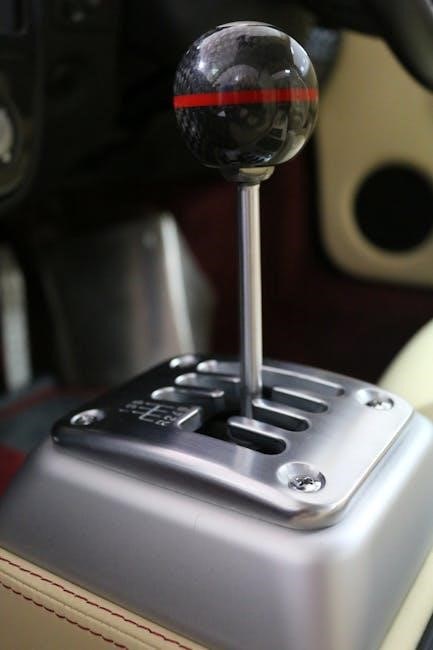kidde nighthawk carbon monoxide detector manual

Kidde Nighthawk Carbon Monoxide Detector Manual: An Overview
The Kidde Nighthawk carbon monoxide detector manual is an essential resource for understanding the device’s operation, safety features, and maintenance. It provides detailed instructions for proper installation, testing, and troubleshooting to ensure reliable CO detection. This guide helps users protect their homes effectively.
Understanding the Kidde Nighthawk CO Detector
The Kidde Nighthawk CO detector monitors the air for carbon monoxide, alarming at dangerous levels. This device is designed for residential use, not detecting smoke or other gases. It provides crucial early warning against CO poisoning.
Purpose and Functionality
The primary purpose of the Kidde Nighthawk carbon monoxide detector is to continuously monitor the air for the presence of CO. This is to provide an early warning signal against the dangers of carbon monoxide poisoning. The device functions by detecting CO levels and triggering an alarm when those levels exceed safe thresholds. It features continuous monitoring, even during power outages with battery backup models. The detector updates its readings regularly, displaying current CO levels and indicating system problems. This helps ensure reliable protection for you and your family.
What it Detects (and Doesn’t Detect)
The Kidde Nighthawk carbon monoxide detector is specifically designed to detect carbon monoxide from any combustion source. It is crucial to understand that this device does not detect smoke, fire, or other gases. The detector’s sole function is to monitor CO levels in residential environments. It is not suitable for use in hazardous locations. This carbon monoxide alarm is intended for indoor residential areas and will alarm when high levels of CO are present. Knowing its limitations ensures proper safety measures are in place.

Key Features of the Kidde Nighthawk
The Kidde Nighthawk boasts key features like a digital display for real-time CO level readings and a battery backup for continuous operation during power outages. These elements enhance its reliability and utility in ensuring home safety.
Digital Display Functionality
The digital display on the Kidde Nighthawk carbon monoxide detector offers users a clear and immediate readout of CO levels in parts per million (PPM). This functionality provides an advanced level of protection, enabling homeowners to monitor changes in CO concentration over time. The display updates regularly, showing current readings and peak levels recorded. This feature allows for quick assessment of potential dangers. Furthermore, the display aids in troubleshooting by showing error codes, ensuring users can promptly address any issues. It enhances overall awareness and response to CO threats, contributing significantly to home safety.
Battery Backup Information
The Kidde Nighthawk carbon monoxide detectors are equipped with a battery backup feature to ensure continuous monitoring even during power outages. This backup system typically uses a 9V battery, providing uninterrupted protection when AC power is lost. The battery backup allows the detector to maintain its functionality, continuously monitoring CO levels and providing alerts if necessary. Regular testing of the battery backup is crucial to ensure it is functioning correctly. The user manual includes detailed instructions on replacing the battery and recommended battery types for optimal performance and reliability during emergencies.

Installation Guidelines
Proper installation of the Kidde Nighthawk CO detector is crucial for accurate monitoring. Follow the manual’s guidelines for optimal placement to ensure timely detection and prevent false alarms, safeguarding your home.
Optimal Placement Locations
For optimal performance, install Kidde Nighthawk CO detectors on each level of your home, including basements and attics, as per the manual’s recommendations. Place detectors in hallways near bedrooms to ensure audibility while sleeping. Mount them on walls about five feet from the floor or on the ceiling; Avoid obstructing the detector with furniture or curtains. Ensure the chosen location is not near windows, doors, or air vents to prevent inaccurate readings. It’s essential to read the manual thoroughly for specific placement advice tailored to your home’s layout for maximum protection.
Avoiding Improper Installation Spots
To ensure accurate readings, avoid installing Kidde Nighthawk CO detectors in locations prone to high humidity, such as bathrooms or laundry rooms, as moisture can cause false alarms. Keep detectors away from direct sunlight or heat sources, like ovens or fireplaces, which may affect sensor sensitivity. Do not place them in dusty or dirty areas, as debris can clog the sensor and impair functionality. Avoid areas near exhaust fans or vents, as they can dilute CO levels, delaying detection. Always consult the user manual for specific guidance tailored to your detector model and home environment.

Operating Instructions and Alarm Response
Understanding the Kidde Nighthawk’s operating instructions is vital for safety. Learn alarm signals and proper responses. Immediate action is critical during an alarm to ensure the safety of everyone in the household.
Understanding Alarm Signals
The Kidde Nighthawk carbon monoxide detector uses distinct alarm signals to indicate the presence of CO. Typically, it emits four short beeps, followed by silence, repeating this pattern to signify a CO threat. A single chirp, on the other hand, might suggest a low battery or a malfunction, requiring prompt attention. A continuous sound indicates a hazardous level.
Familiarizing yourself with these different signals is crucial for discerning the nature of the problem and responding appropriately. Always refer to the user manual for a comprehensive guide to alarm patterns.
Procedure During an Alarm
Upon activation of the Kidde Nighthawk carbon monoxide alarm, immediate action is vital. The primary step is to move to fresh air, either outdoors or near an open window or door, to avoid CO exposure. Conduct a headcount to confirm everyone’s safety and account for all individuals in the building.
Contact emergency services or the fire department to assess the CO levels and ensure the environment is safe before re-entry. Do not re-enter the premises until professionally cleared.
Maintenance and Testing
Regular maintenance and testing are crucial for ensuring the Kidde Nighthawk carbon monoxide detector functions correctly. This includes routine battery replacements and consistent testing to confirm the alarm’s operational status and reliability over time.
Battery Replacement Guidance
The Kidde Nighthawk carbon monoxide detector requires timely battery replacement to ensure continuous protection, especially during power outages. Refer to the manual for specific battery types recommended, such as Energizer 522, Duracell MX1604, or Ultralife lithium power cell model U9VL. Replace the battery immediately when the detector indicates a low battery signal, usually a chirp accompanied by a visual warning. Ensure the battery compartment is securely closed after replacement. Regularly check the battery’s expiration date for optimal performance. Proper battery maintenance is vital for reliable carbon monoxide detection.
Regular Testing Procedures
Consistent testing of the Kidde Nighthawk carbon monoxide detector is crucial for verifying its functionality and ensuring household safety. The user manual outlines the recommended testing frequency, typically weekly or monthly, using the test button. Pressing the test button should trigger the alarm, confirming its operational status. If the alarm fails to sound, consult the troubleshooting section of the manual or consider replacing the unit. Documenting test dates helps maintain a consistent schedule. Regular testing provides peace of mind, knowing the detector is actively monitoring carbon monoxide levels, safeguarding your home.
Troubleshooting Common Issues
Addressing common issues with your Kidde Nighthawk detector ensures optimal performance. The manual provides solutions for false alarms, error codes, and general malfunctions. Troubleshooting steps can often resolve problems quickly, maintaining continuous carbon monoxide detection.
False Alarms: Causes and Solutions
False alarms on a Kidde Nighthawk CO detector can be frustrating, but understanding their causes is key to resolving them. Common culprits include humidity, dust, and the presence of other gases. Ensure the detector is not near bathrooms or cooking appliances where these conditions are frequent. Regularly clean the detector with a soft cloth to remove dust. If false alarms persist, test the detector. If the issue continues after testing, consider relocating the unit or replacing it, consulting the manual for guidance.
Error Codes and Their Meanings
The Kidde Nighthawk carbon monoxide detector uses error codes to communicate specific issues. These codes are displayed on the digital screen and provide insight into the detector’s operational status. Common error codes indicate sensor failure, low battery, or end-of-life. Consult the user manual to accurately identify each error code and understand the recommended actions. Addressing error codes promptly ensures continuous protection against carbon monoxide. If unsure, contact Kidde support for assistance.

Accessing the User Manual
Finding the correct Kidde Nighthawk user manual is crucial; Access manuals via Kidde’s website using the model number. Online resources provide quick access to essential information for optimal detector use and maintenance.
Finding the Correct Manual by Model Number
To locate the appropriate Kidde Nighthawk carbon monoxide detector manual, identifying the correct model number is essential. The model number, typically found on the back of the alarm or on a label in the corner, will be labeled as “MODEL.” Use this number to search on the Kidde website or other online resources.
Different Nighthawk models may have unique features or operating instructions, so it’s crucial to use the manual specific to your device to ensure accurate information and proper usage. Entering the model number into the search bar should yield the correct PDF manual.
Online Resources for Manuals
Several online resources offer Kidde Nighthawk carbon monoxide detector manuals. The primary source should be the official Kidde website, where you can search for manuals using the model number. Reputable appliance manual websites also host a variety of manuals, allowing you to find specific models and download the PDFs.
Amazon is another potential resource, as product listings often include manuals or links to them. Additionally, online forums and communities dedicated to home safety or Kidde products might provide access to user manuals shared by other users. Always ensure the manual source is trustworthy.
Warranty Information
The Kidde Nighthawk carbon monoxide detectors typically come with a limited warranty from the manufacturer. This warranty generally covers defects in materials and workmanship for a specified period, often ranging from five to ten years from the date of purchase. To claim warranty service, you usually need to provide proof of purchase, such as a receipt, and follow Kidde’s instructions for returning the defective unit.
The warranty might not cover damages caused by misuse, neglect, or unauthorized repairs. Always consult the specific warranty document included with your Kidde Nighthawk for complete details.
Leave a Reply
You must be logged in to post a comment.